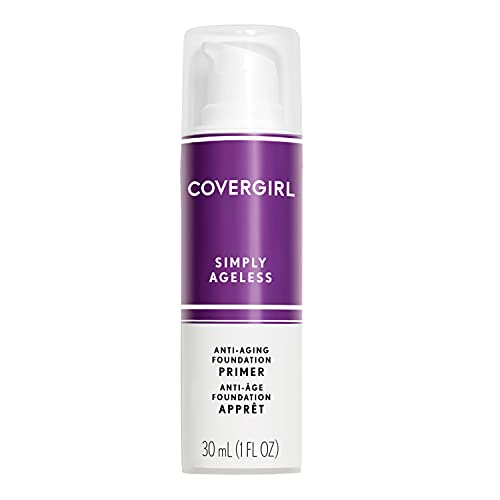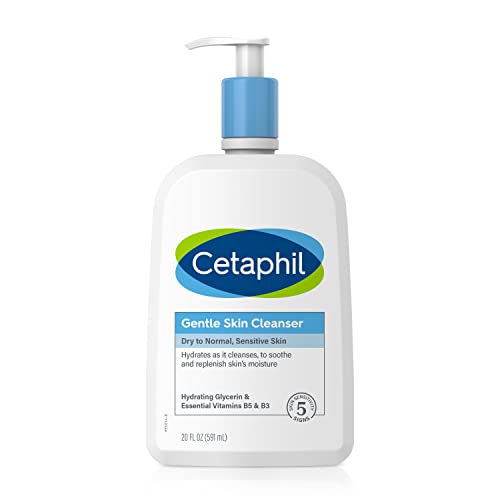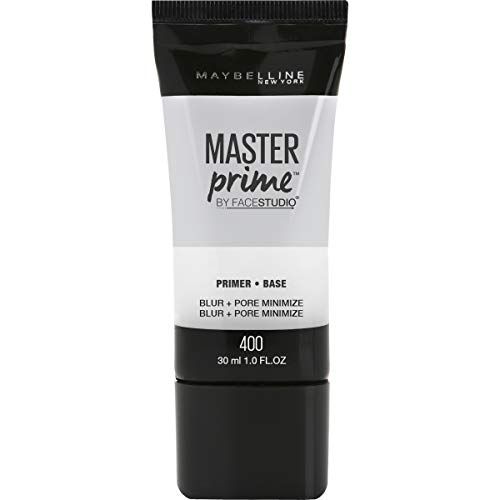
How to prevent my skin from looking oily with illuminating face primer?
Do you love using illuminating face primer, but struggle with your skin looking too oily? This step-by-step guide is here to help! By following these simple steps, you can achieve a fresh and radiant look without the excess oil. Say goodbye to the dreaded shine and hello to a healthy glow. Your skin will thank you!
Top-rated primer for flawless skin



Cleanse your skin
- Start by cleansing your skin thoroughly. Gently massage a suitable cleanser onto your damp face using circular motions. Ensure that the cleanser you choose is specifically formulated for your skin type, whether it be oily, dry, or sensitive.
- Rinse your face with lukewarm water, making sure to remove all traces of the cleanser. Pat your skin dry with a soft towel, being careful not to rub or tug on the delicate skin.
- For a deeper cleanse, consider using a cleansing brush or a facial sponge to gently exfoliate your skin. This will help to remove any dead skin cells and unclog your pores, leaving your skin fresh and revitalized.
- Remember to cleanse your skin both in the morning and at night, as this will help to eliminate any impurities that have accumulated throughout the day.
- Follow up with a toner and moisturizer to restore balance and hydration to your skin. This will help to keep your skin healthy and glowing.



Apply a mattifying moisturizer
After cleansing your face, grab a mattifying moisturizer specifically formulated for oily skin. Gently squeeze a small amount onto your fingertips. Start by applying the moisturizer to your T-zone, which includes your forehead, nose, and chin. Use upward strokes to spread the moisturizer evenly across your face, working your way outwards towards your cheeks and jawline. Make sure to cover your entire face, paying extra attention to any areas that tend to get oilier. Massage the moisturizer into your skin using circular motions for better absorption. Allow the moisturizer to fully sink in before moving on to the next step in your skincare routine. This mattifying moisturizer will work wonders in controlling oil production and leaving your skin looking fresh and matte all day long.



Use a lightweight illuminating face primer
- Choose a lightweight illuminating face primer for a subtle glow.
- Apply a small amount of the primer to your entire face.
- Focus on areas where you want to add illumination.
- Blend the primer into your skin using your fingertips or a makeup brush.
- Allow the primer to dry before applying foundation or other makeup products.
- Enjoy the natural, radiant glow that the illuminating face primer provides.



Blend the primer evenly
Blend the primer evenly into your skin using your fingers or a makeup brush. Start by applying a small amount of primer to the back of your hand or directly onto your face. Then, use your fingers or a makeup brush to gently spread the primer across your skin. Make sure to cover your entire face, including your forehead, cheeks, nose, and chin.
Pay extra attention to the areas where you tend to get oily, such as your T-zone. Use your fingers or brush to blend the primer into these areas, ensuring that it is evenly distributed. Avoid rubbing or tugging at your skin, as this can cause irritation. Instead, use gentle, circular motions to blend the primer seamlessly into your skin. Once you have blended the primer evenly, you can proceed with applying your foundation or other makeup products for a flawless finish.



Set the primer with a translucent powder
To set the primer with a translucent powder, follow these steps:
- Choose a translucent powder that matches your skin tone or is slightly lighter.
- Take a fluffy powder brush and dip it into the powder. Tap off any excess.
- Gently press the brush onto your T-zone (forehead, nose, and chin) where you tend to get oily.
- Use a light, sweeping motion to blend the powder onto the rest of your face, including the cheeks and jawline.
- Make sure to blend well to avoid any visible lines or patches of powder.
- If you have dry or normal skin, you can apply the powder all over your face for a more matte finish.
- If you have oily skin, focus on the areas where you get the most shine.
- Once applied, wait a few minutes for the powder to set before applying any other makeup products.
- Throughout the day, if you notice any excess oil, gently blot your face with a tissue or oil-absorbing sheet, then reapply a light dusting of translucent powder as needed.



Touch up throughout the day
- Always keep a packet of blotting paper or oil-absorbing sheets in your purse or bag.
- Whenever you notice excess oil on your skin, take out a sheet.
- Gently press the paper or sheet onto the oily areas of your face.
- Lightly blot the paper or sheet without rubbing or disturbing your makeup.
- Repeat this process on all the areas of your face that need touching up.
- Dispose of the used paper or sheet properly.
- You can repeat this process as many times as needed throughout the day to keep your skin looking fresh and oil-free.
Achieving a mattified, radiant complexion
In conclusion, maintaining a matte appearance while using an illuminating face primer is possible with the right skincare routine and product choices. By implementing these tips, you can achieve a balanced and radiant complexion without the unwanted shine.
Necessary supplies






Oil Control Secrets
Achieving Radiant Skin Without Excess Oil – Every Time
Step-by-Step Guide to Achieving a Radiant Complexion
- Start with a clean and moisturized face before applying the illuminating face primer
- Take a small amount of the primer on your fingertips or a makeup brush
- Apply the primer evenly all over your face, focusing on areas that you want to highlight or add a glow to, such as the cheekbones, forehead, and bridge of the nose
- Gently blend the primer into your skin using upward motions, ensuring there are no visible lines or streaks
- Allow the primer to dry for a few minutes before applying foundation or other makeup products on top. This will help the primer to set and provide a smooth base for your makeup
- Enjoy the radiant and glowing effect the illuminating face primer gives to your complexion
Frequently Asked Questions about Illuminating Face Primer
What is an illuminating face primer, and what does it do?
An illuminating face primer is a cosmetic product that is used as a base for makeup application. Its main purpose is to create a smooth and even canvas on the face, preparing it for the application of foundation and other makeup products.
Unlike regular face primers, an illuminating face primer has light-reflecting properties that help to create a subtle glow or radiance on the skin. It contains light-reflecting particles or pigments that bounce off light, giving the complexion a luminous and dewy appearance.
The illuminating effect of this type of primer can help to reduce the appearance of dullness, fine lines, and uneven skin tone. It can also enhance the overall brightness and youthfulness of the complexion. Additionally, an illuminating face primer can prolong the wear of makeup, allowing it to last longer throughout the day.
This product is particularly beneficial for those who desire a radiant and fresh-looking complexion. It is suitable for various skin types, including dry, normal, and mature skin. However, individuals with oily or acne-prone skin may prefer to use a mattifying primer to control excess shine.
To use an illuminating face primer, apply a small amount onto clean and moisturized skin, focusing on areas that you wish to highlight or bring radiance to, such as the cheekbones, brow bone, and bridge of the nose. Allow the primer to dry before proceeding with the application of foundation or other makeup products.
How do you apply an illuminating face primer for best results?
To apply an illuminating face primer for best results, follow these steps:
- Start with a clean and moisturized face. Ensure that your skin is free from any dirt or excess oil.
- Take a small amount of the illuminating face primer on your fingertips or a makeup brush. A pea-sized amount is usually sufficient.
- Dot the primer onto your forehead, cheeks, nose, and chin. This will help to distribute the product evenly across your face.
- Gently blend the primer into your skin using your fingertips or a makeup sponge. Use upward circular motions to ensure smooth application.
- Pay extra attention to areas where you want to add a natural glow or radiance, such as your cheekbones or the bridge of your nose. These are the areas that will benefit most from the illuminating properties of the primer.
- Allow the primer to settle on your skin for a few minutes before proceeding with your foundation or other makeup products.
- Once the primer has set, you can continue with your regular makeup routine, applying foundation, concealer, or any other products as desired.
- Remember to set your makeup with a setting powder or spray to ensure it lasts longer and maintains the desired glow.
Can an illuminating face primer be used as a highlighter or to enhance specific areas of the face?
Yes, an illuminating face primer can be used as a highlighter or to enhance specific areas of the face. Face primers with illuminating properties often contain light-reflecting particles or pigments that give the skin a radiant glow. These primers can be applied to targeted areas such as the cheekbones, brow bone, cupid’s bow, or bridge of the nose to provide a subtle highlight and enhance those features. However, it’s important to note that the effect may be more subtle compared to a dedicated highlighter, which is specifically formulated for intense highlighting.
How does an illuminating face primer differ from a regular face primer?
An illuminating face primer differs from a regular face primer primarily in its purpose and effect on the skin. While both types of primers are used before applying makeup to create a smooth base and help makeup last longer, they have distinct differences.
A regular face primer is designed to minimize the appearance of pores, fine lines, and wrinkles while providing a mattifying effect. It usually has a silicone-based formula that helps to fill in imperfections and create a smooth canvas for foundation application. Regular primers are often colorless or have a slightly tinted shade that matches the skin tone.
On the other hand, an illuminating face primer aims to add a subtle glow and radiance to the skin. It typically contains light-reflecting particles or luminizers that create a soft, dewy finish. Illuminating primers are formulated with ingredients like mica or pearl powders, which help to give the skin a luminous appearance. They can also contain moisturizing properties to provide hydration and brighten the complexion.
In summary, the key difference between an illuminating face primer and a regular face primer lies in the desired effect on the skin. Regular primers focus on creating a smooth, matte finish, while illuminating primers are specifically formulated to add a natural glow and radiance to the skin.

Hey, I’m Ava Wilson—a skincare enthusiast and a certified esthetician. I’m dedicated to sharing my knowledge and empowering others to achieve healthy, glowing skin through simple, effective routines and natural remedies. Join me on this exciting skincare journey, and let’s unlock your skin’s potential for a confident, beautiful you.





